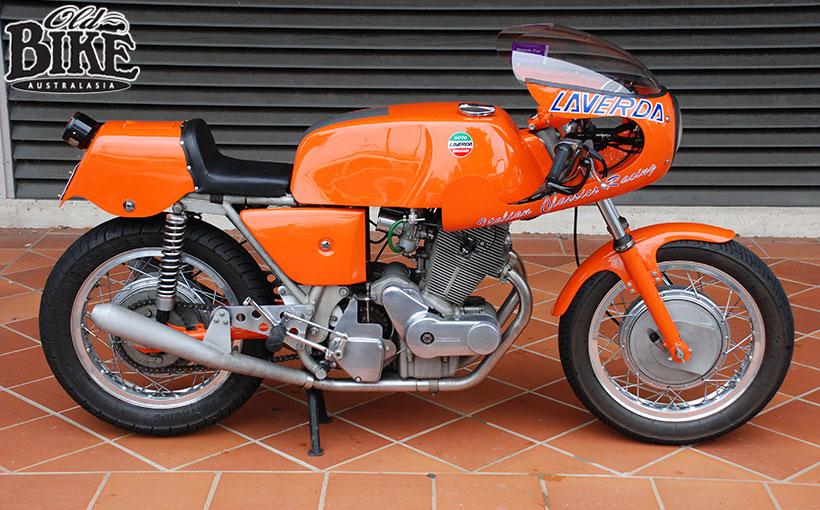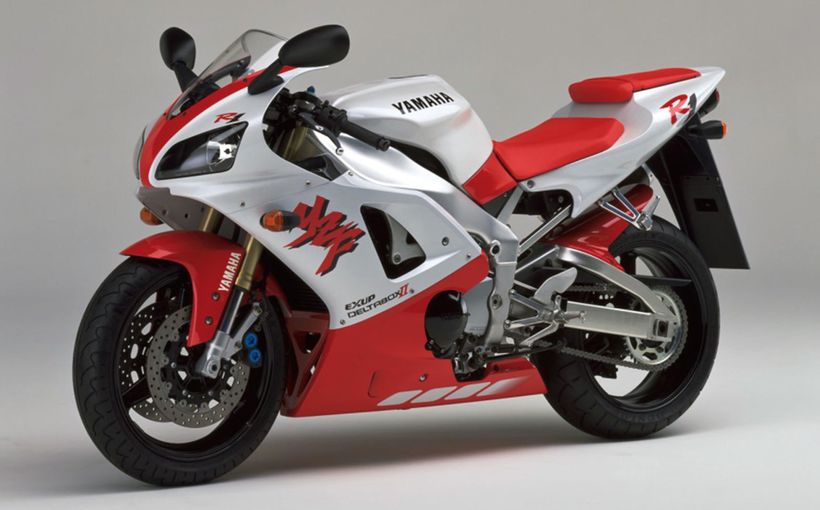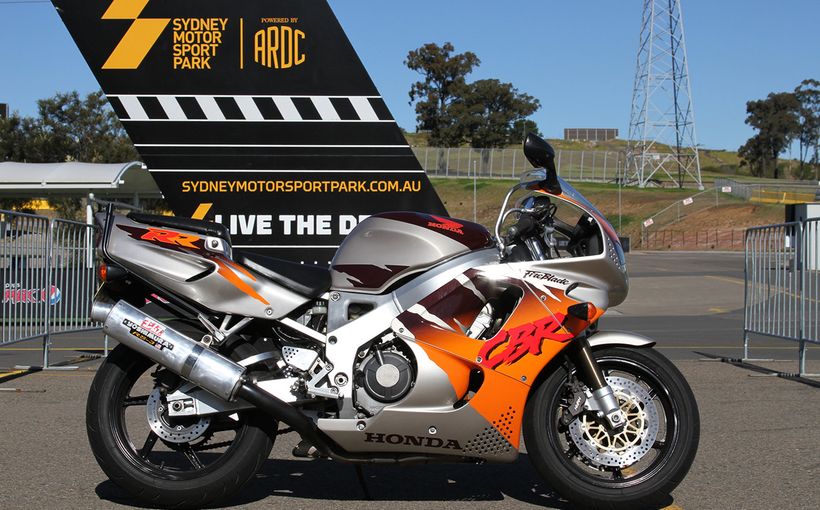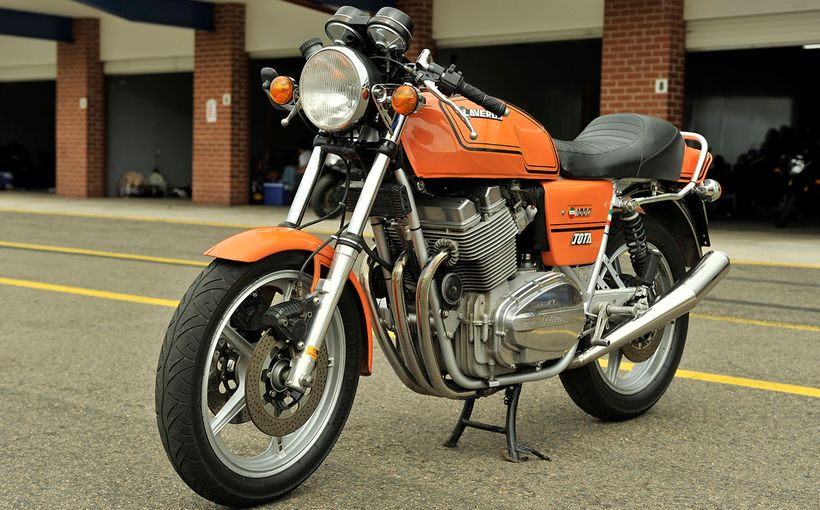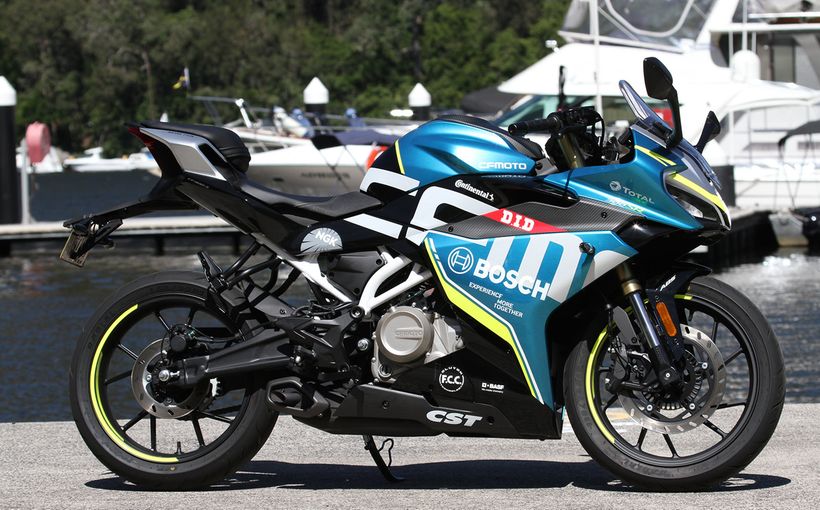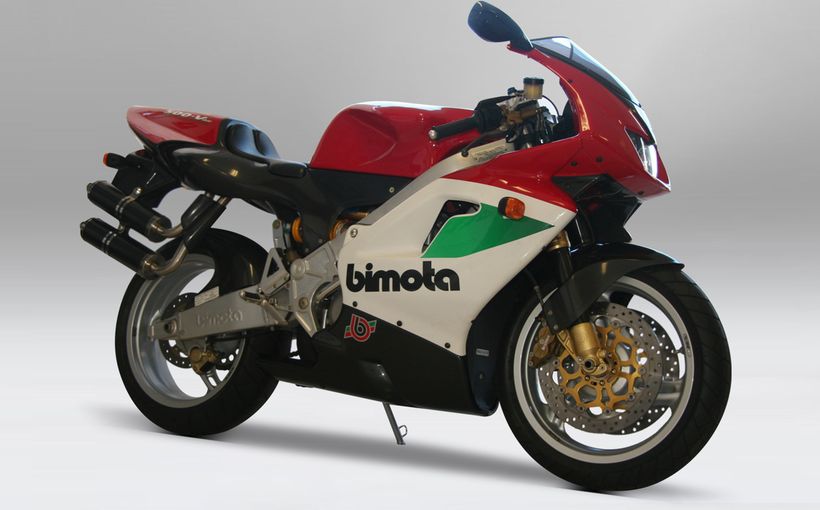Old Bike Australasia: 1972 Laverda 750 SFC - Tangerine Dream

In 1999 the Guggenheim Museum in New York staged its now iconic exhibition, ‘The Art of the Motorcycle”, and in the series of machines from the 1970s, the Laverda SFC 750 was a standout, not just for its vivid orange décor, but for the fact that every sinew of this gorgeous creation screamed elegance of design and pure functionality. That machine was a SFC Series 15,000 of 1975, one of the final batch featuring front and rear disc brakes and a host of other detail modifications from the first SFC, released in 1971.
Laverda was passionate about racing, and in particular, Endurance racing - that branch of the sport that seems to thrive in Europe and attract scant interest elsewhere, except possibly Japan. The Breganze factory’s aim was to conquer events like the Montjuic, Spa and Bol d’Or 24 Hour Races, as well as other long distance events, and the choice of the distinctive orange livery was so the machines could be picked out easily from a fair distance.
The story of the company founded by Pietro Laverda goes back to 1873, initially producing agricultural machinery for the neighbouring farming community around Breganze in the northern Italian Veneto region. In October 1949, Pietro’s grandson Francesco founded Moto Laverda S.A.S. The first product of the new venture was a 75cc four-stroke single, the Motoleggera or Lightweight Motorcycle. Right from the start, the company chose to demonstrate the effectiveness of its products in the field of competition, particularly endurance events like the Milano-Taranto and the Giro d’Italia. Success came instantly in these gruelling events – a clear demonstration of the quality of the product – and soon variations of the original ‘75’ began to appear in more sporting trim. The 75 became a 100, and in 1962, a 200cc twin.

But the US, and other markets, wanted something bigger, and the result was the 650cc twin, which was immediately labelled as a copy of the Honda CB77, albeit twice the capacity. Within the space of a few months, the 650 had been redesigned as a 750, and Laverdas of both capacities convincingly cleaned up the outright results of the 1968 Giro d’Italia. A touring model, the GT, was soon joined by the S, or sport model. The engine boasted a five roller- bearing crankshaft, with four bearings supporting the single overhead camshaft, a very robust five speed gearbox and a heavy duty starter motor with a 24 Ah battery.
Although the engine was clearly the focal point of the design, the specification for the rest of the machine was just as impressive and designed with durability in mind. Up front were Ceriani forks attached to a steering head with substantial tapered roller bearings, Grimeca brakes and a spine-type frame with the power unit as a fully-stressed member.
With the development of the 750S, the factory’s appetite for competition intensified, and in June 1969 three modified S models were sent to the 24 Hours of Oss, where Massimo Laverda (Piero’s brother) and Augusto Brettoni finished a fine fourth. One year later Laverda returned to the Dutch event and took the first three places.
The S model was really a mildly-tuned version of the standard machine, but for serious competition something with far more grunt was needed. Thus, in 1971, the SFC (Syper Freni Competizione, or Super Brake Competition) was born. The emphasis on brakes was reflected in ditching the Grimecas for Laverda’s own front and rear drums. The SFC was really an out-and-out racer that was deemed too savage for road use, resulting in a slightly detuned sports model, the 60-horsepower SF.
However the SFC was far from a tuned version of the S, with a purpose-built frame with special lugs to take the SFC bodywork and fibreglass fuel tank. Each engine, which has specially cast barrel and head, was carefully blueprinted, pistons exactly weight-matched, assembled to racing tolerances and tested on the factory dyno. Crankcases were heat-treated for extra strength and the whole bottom end and con-rods were highly polished. Inside the head were bigger valves, a shallower combustion chamber and a racing camshaft called the 2C.

Laverda Down Under.
Laverda was virtually unheard of in Australia until the late 1960s, but gradually a dealer network was established and a small band of Laverda enthusiasts began to form. In Sydney, the long-established firm of Jim Eade Pty Ltd, managed by Max Eade, son of the founder, became the agent. A frequent visitor to the Service Department at the time was young Vic Vassella, himself from a famous racing family that included his father Victor and his uncle Frank. Vic was racing a Norton Commando as a B-grader but hankered for something more exotic, and when he was offered one of the two SFCs allocated to Australia in 1972, he jumped at the chance. The deal was for trade price - $2,700 – on the condition that the SFC was raced to promote the road range. Considering that a new Honda CB750 was $1,670, it was quite an ask.
Vic recalls his initial impressions. “ We registered the SFC a few weeks before its first race to get some miles on the motor. After a few hundred k’s I started to increase the revs a bit and at first I thought I had bought a dud. With the mufflers on nothing much happened until 6,000 rpm, but with the race megaphones on power was strong from 4,000 and it would rev to 8,000 no problem. I raced it on and off for a few years, but once the water-cooled Yamahas appeared the Laverda’s days were numbered. I nearly sold it to join the Yamaha masses but at the last minute I changed my mind. It did a few more k’s on the road before I moved to New Zealand in 1978, where there was some more road work plus a club day at Manfield in the early 1980s. No-one knew what it was – they thought I had built it up. When I moved back to Australia in 1988, the Laverda came with me. “
Vic’s SFC, engine number 11085, was one of the third ‘series’, referred to as the 11,000 Batch (the first two ‘Batches’ were referred to as the 5,000 and 8,000, while the fourth Batch, the 16,000, had disc front brakes with a rear drum). The other Australian-delivered SFC, engine number 11088, went to Stanco in Melbourne and was subsequently raced by Jeff Curley. This model had the exhaust system redesigned to run under the engine, instead of being splayed out each side – a feature that inhibited ground clearance when cornering. Unique x-shaped cross over pipes linked the two main exhausts. The engine breathed through Amal Concentrics and the identical Laverda drum brakes were fitted front and rear. The bikini fairing even looked like it came from the same mould as those fitted later to the Ducati SS series.
A new life
20 years after he bought the Laverda, Vic advertised it for sale, claiming that the cost of spare parts, should he ever need them, worried him. He found a willing buyer in Chris Cutler, previously a Ducati and MV enthusiast. Chris’s vision was to have examples of “the best three 70’s sports bikes”. Vic says, “When I registered it and sold the bike to Chris Cutler in 1992, I thought I would never see it again”. Things would transpire differently.
In Chris’ words, the SFC was “tatty, but completely original. Just about all the original Laverda nuts and bolts are still in place, the rear shocks are original, as are the levers, rear-set footrests, rims, and the matt chrome pipes. These SFCs were built in a separate workshop to the main factory, and were made like trucks for endurance racing. The SF cranks and rods were lightened and polished, and the cams were different to the SF. There’s something about Italian bikes of this era that I love, and there’ll never be anything like this one again.”

With help from Chris Dowd, the SFC was rebuilt, although the engine was in remarkably sound condition, and to this day still runs the original bottom end. For the next few years the SFC made occasional appearances in B.E.A.R.S. and Historic meetings with Vic Vassella back in the saddle. In 2002, Chris made a career move to Zambia. “I put the SFC away in my study on my farm, because I didn’t know what to do with it and as far as I was concerned, it wasn’t going to be raced again. But a guy called Tony Border pestered me to buy it, and I eventually sold it to him in mid-2003. He is responsible for the way the bike is now, he did and absolutely brilliant job of restoring it, once again. Mechanically it was fine, but the bodywork was pretty sad because it was the original stuff and he went to a lot of trouble to recreate the few bits that weren’t correct – special fairing brackets, the correct horn mount, and a brand new correct-type throttle grip to replace the one that had been mashed a few times when Vic fell off it. He also got the correct headlamp lens – a slightly curved one – which is very rare, rewired it, and reinstalled the original ignition switch, which I think is a marvellous touch. The original carb bell-mouths were plastic – I still have a set – but Tony made some replacements out of spun aluminium. Tony had a lot of contact, and countless emails, with Marnix van der Schalk in Rotterdam, who started the SFC Register. The only thing I think is not quite right is that I reckon the handlebars should be black (not chrome). The levers are original and they are black.”
A few more years passed, and Chris, now comfortably ensconced in his new home continued his Laverda love affair, but only by devouring all the literature he could find. “I was sitting in my study in Cape Town, South Africa with all this Laverda racing history – and no bike! So I began to pester Tony back in Australia – I kept asking ‘can’t I prise that thing out of you’? So eventually he relented, and the SFC was mine again.”

A few years ago, Chris rode the SFC from Sydney to Tweed Heads, a horror trip in non-stop pouring rain. “The SFC has the most uncompromising riding position imaginable. It was made so the (Endurance) riders could tuck right in, with their arms in the recesses in the tank and inside the fairing. That’s OK if you’re a small build, which I am not! How they rode them for 24 hours I’ll never know. The bike is quite demanding to ride in terms of getting the best from it. The handling is superb from the point of view of stability and predictability and once pointed it stays there. The braking is more than adequate for the road and has a nice feel to it. The gearbox is in my view is “slow and deliberate” but the close ratios on third, fourth and fifth make for great fun with the engine in the power band. This is where the challenge is….nothing happens under 4,000 rpm, in fact you wonder if the bike is ever going to do anything. Around 5,000 rpm there are some vague stirrings that something might happen soon….then at around 6,000 rpm all hell breaks loose with a definite change in the engine intake noise and a howl from the exhausts. This is when the fun starts - and of course by now you are moving very quickly - with a bike which wants to go where you have pointed it! All this makes you forget the riding position which was built for somebody with gorilla arms and a flat stomach to avoid “ball snatch” between tank and seat squab. Now you are dialled in to “complete fun” on the right sort of roads, which for me are sweepers mingled with short straights.”
In six years of limited productions, just 549 SFCs were built, and today are very highly prized items. 26 years after it arrived in Australia, SFC 11085 hasn’t quite earned its retirement, despite being put out to pasture on several occasions. And by the sound of Chris’ plans, there’s a lot more action left in the old girl yet.


Protect your Laverda. Call Shannons Insurance on 13 46 46 to get a quote today.

